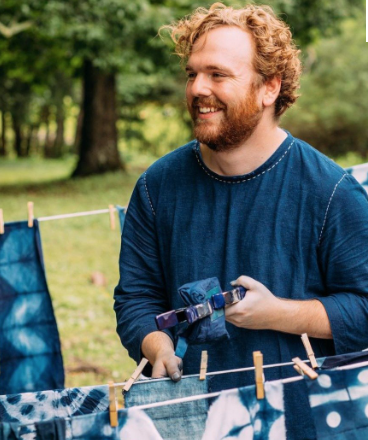
Aaron Sanders Head is a Southern, Alabama-based textile artist. Aaron was raised in rural Grady, AL and Hope Hull, AL, as the youngest of three children from an artist mother and an agricultural worker father. His grandparents were both rural mail carriers, and the times Aaron spent accompanying them on those trips cemented early on a fondness for rural areas and the importance of connection however it can be found. That learned sense of observation combined with inherited family traditions of textile and agriculture inform the unique visual language Aaron works in today, that exists in the worlds of quilt-making, historic textile techniques, handwork and natural dyes. Aaron creates quilts and hand-stitched, naturally dyed textiles that explore the lived experiences of rural Alabamians.
When looking at a piece made by Aaron, the viewer might see many different things—a familiar quilt block, skewed slightly; beautiful, deep indigo blues; familiar vintage linens; a patchwork of seemingly disparate items, reassembled to create something bigger. Aaron’s textile works, often taking the form of hand-stitched panels and quilts, explore the diverse experiences of living in contemporary rural Alabama. His artistic practice utilizes the agricultural, artistic and storytelling traditions of his family to depict the realities of overlooked communities, while also celebrating and memorializing the bonding traditions that hold communities together and investigating the reasons why people remain.
The compelling action behind Aaron’s artistic practice is the desire to create work that feels truly endemic; directly rooted in, enhanced by, and in conversation with the place the work was created. One of his primary goals is for the work to look like the place from which it comes. This search for a strong foundation led to Aaron using solely natural dyes—primarily indigo, black walnut, sumac, osage wood, goldenrod, and others. Aaron grows or forages all of the dye material used in his work in Greensboro, AL, located in Hale County. These materials have complex regional histories, invoking both the powerful, healing traditions of Indigenous, African American and rural medicine practitioners, and the abject horrors of forced labor and enslavement. Aaron uses traditional methods of coaxing color from these materials, forging a direct connection between the work, the history of the land, and the material itself.
The materials Aaron uses are exclusively secondhand, often taking the form of secondhand linens donated to him by his community. It isn’t uncommon for Aaron to find a bag of handkerchiefs or pillowcases on his front porch, left anonymously by a community member who is cleaning out a closet. The combination of local plants for dye, and local textiles for fabric, leads to work that is truly sourced from the place it has been made. The slyly radical framework of quilt-making and textiles enables Aaron’s work to embrace the tension between a recognized traditional craft and something less contained.
Aaron’s works are a testimony to the generous, fierce natural beauty of Alabama, and a result of the deep but ever-adaptable roots that radical people have fostered in the Black Belt for generations. Aaron’s ongoing practice explores the unifying and reclaiming abilities of textiles and natural dyes, and uses the familiarity of textiles and quilts as a mode of storytelling.
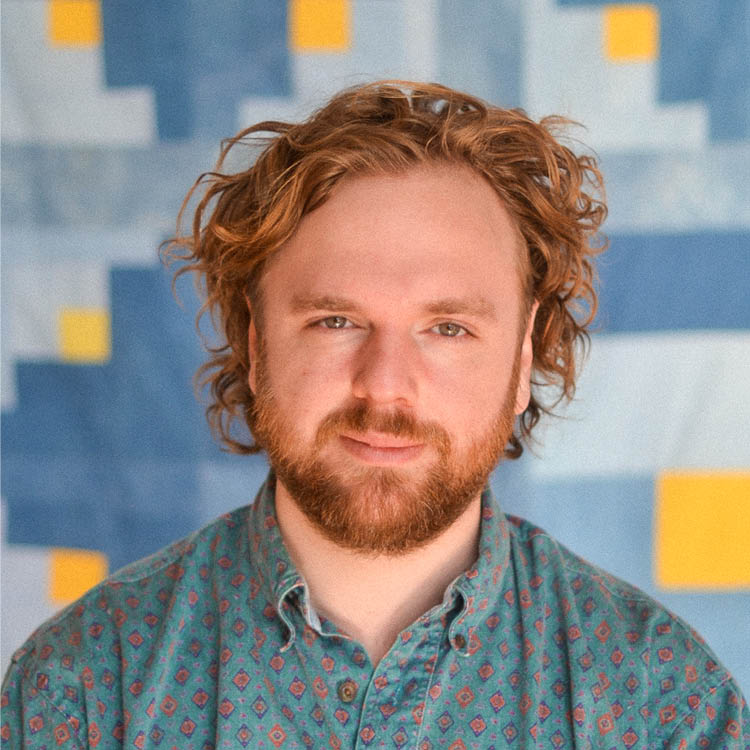
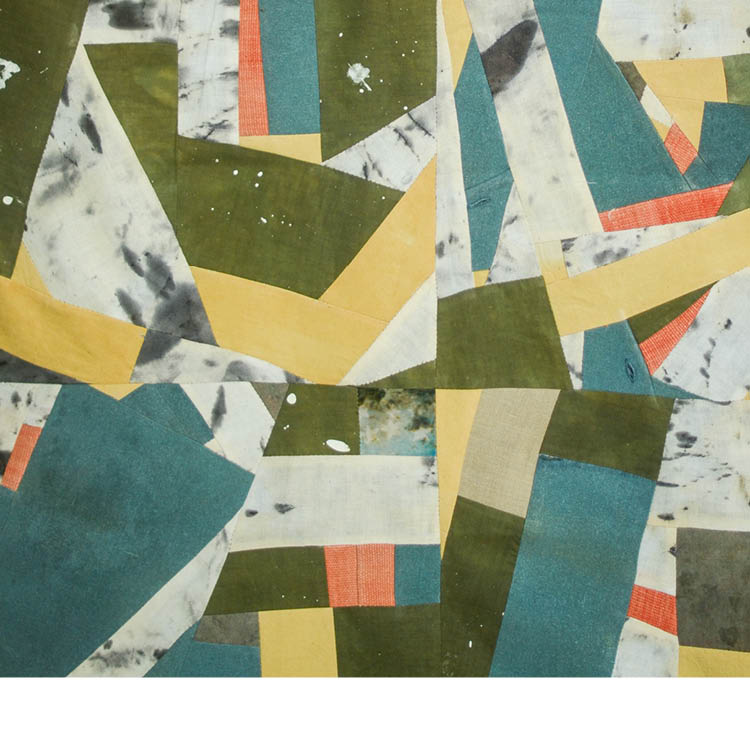
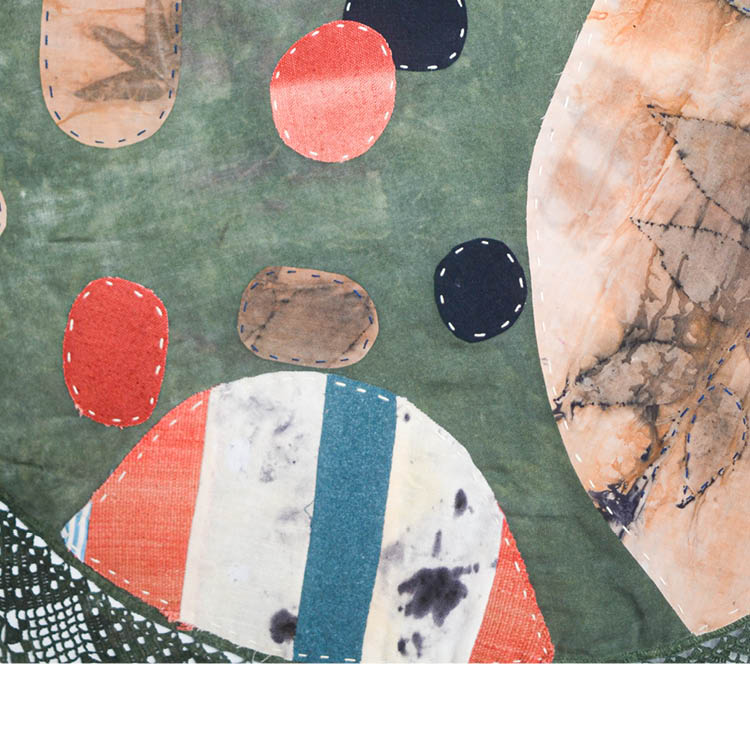
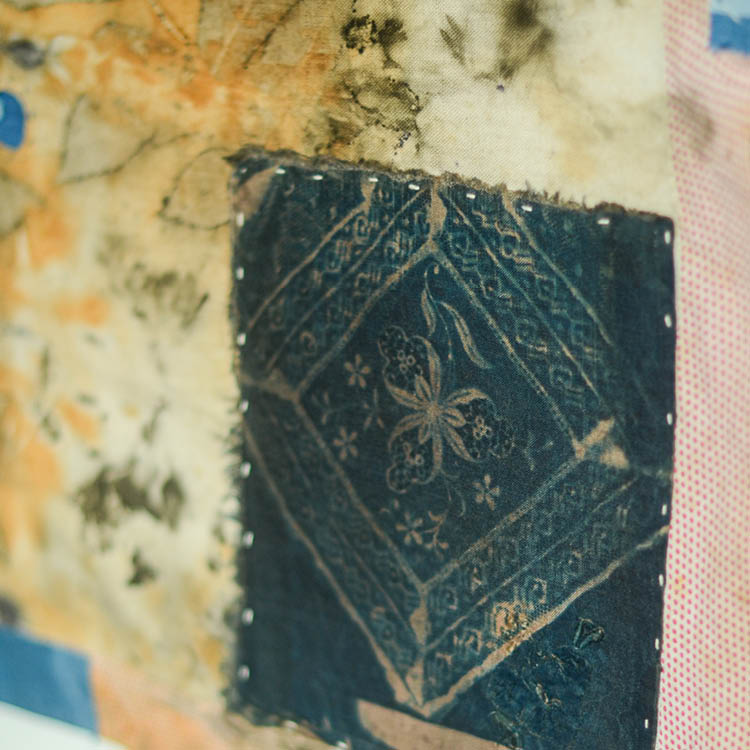
Related Events
